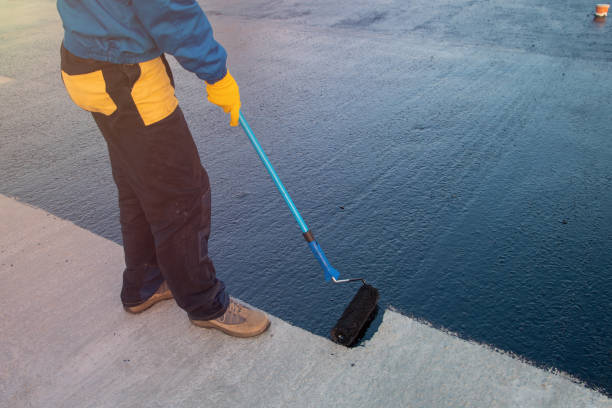Water proofing is an essential aspect of every structure that is typically neglected until it’s past the point of no return. Proper waterproofing safeguards your investment by avoiding water damage, which can lead to high repair costs and potential health risks due to mold and fungus. Whether it's the roofing, foundation, or lower level, understanding the optimal waterproofing techniques can save you thousands and provide a dry living space.
As we dive into the definitive guide on waterproofing, we'll explore the various options available, debunk common fallacies, and address crucial clues that point to your property may need urgent care. From flat roof waterproofing to basement waterproofing, we'll cover everything you must be aware of to effectively safeguard your home against damage by water. With our guidance, you can make smart choices and choose the right approach for your particular circumstances.
Key Waterproofing Approaches
One of the most effective techniques for waterproofing roofs is the use of membrane solutions. These systems can be made from materials such as PVC, TPO, or EPDM compound. They create a seamless barrier that blocks water infiltration and can efficiently be installed on flat or gently sloped roofs. Additionally, these membranes come with multiple warranties and can last for decades when properly maintained, making them a budget-friendly choice.

Another popular method involves using liquid waterproofing treatments. These treatments are applied directly to the roof surface and can provide a strong protective layer against water damage. They are particularly adequate for uneven surfaces and complex roof shapes. Liquid treatments can also offer UV protection and help maintain energy efficiency in buildings by repelling sunlight and diminishing cooling costs.
Lastly, roof encapsulation is a crucial waterproofing method that involves the implementation of a seal to seams, joints, and penetrations where water can enter. This method is particularly essential for roofs with many features, such as chimneys or vents. Regular maintenance and reapplication of sealants can significantly extend the life of a roof and ensure that it remains sealed, protecting your investment and lowering the need for expensive repairs down the line.
DIY vs. Professional Waterproofing
When considering waterproofing for your property, one of the first determinations you need to make is whether to handle the project yourself or hire a professional. Do- https://maroon-eagle-nq7h89.mystrikingly.com/blog/sealing-the-external-areas-an-complete-resource -Yourself waterproofing can be a cost-effective option, enabling homeowners to cut back on labor costs. There are many products on the market for those who prefer to do it themselves, from sealants to waterproofing membranes, which can be applied with relative ease. However, successful DIY waterproofing requires a solid understanding of the materials and techniques necessary, as well as proper planning to ensure sustainability.
On the flip side, professional waterproofing services come with the expertise and experience required to address even the most complex situations. Professionals have access to specialized equipment and high-quality materials that may not be readily available to the average homeowner. They can conduct detailed assessments of your property to detect vulnerabilities and apply comprehensive solutions that reduce the risk of water damage. While this option incurs greater up-front costs, it can ultimately save you money by staving off future repairs due to incorrect installation.
Ultimately, the choice between DIY and professional waterproofing depends on your skill level, financial situation, and the complexity of the project. If you feel assured in your abilities and have a limited area to waterproof, a Do-It-Yourself approach might be suitable. However, for larger projects or areas with substantial water exposure, enlisting a professional can ensure that the job is done right, preserving your investment and providing assurance.
Cost of Ignoring Waterproofing
Neglecting waterproofing in your building can lead to considerable financial setbacks. Water damage frequently appears in the shape of mold growth, weakened structural integrity, and decayed materials, all of which can be costly to repair. Homeowners who disregard early signs of water intrusion may find themselves facing extensive renovation projects, which can consume their savings and cause interruptions in their daily lives. The financial burden of fixing water-related issues typically far exceeds the cost in proper waterproofing solutions.
In addition, ignoring waterproofing can have a long-term impact on property value. Water damage can lead to decreased appraisal values and make the property more difficult to sell to potential buyers. Most potential homeowners carry out thorough inspections before purchasing, and the revelation of water damage can discourage buyers or reduce their offers markedly. In Additional hints , properties with a background of leaks or water damage stay listed longer – a scenario that leads to lost opportunities and financial losses for sellers.
Lastly, the emotional toll should not be overlooked. Dealing with water damage can be extremely stressful. http://anantsoch.com/members/oboepantry7/activity/1299164/ requires quick decisions when it comes to repairs and can disrupt the day-to-day lives of those affected. Going for waterproofing as a proactive measure can provide calm and help avoid the chaos associated with managing water damage down the line. Putting money in waterproofing now ensures a safer living environment for years to come.
